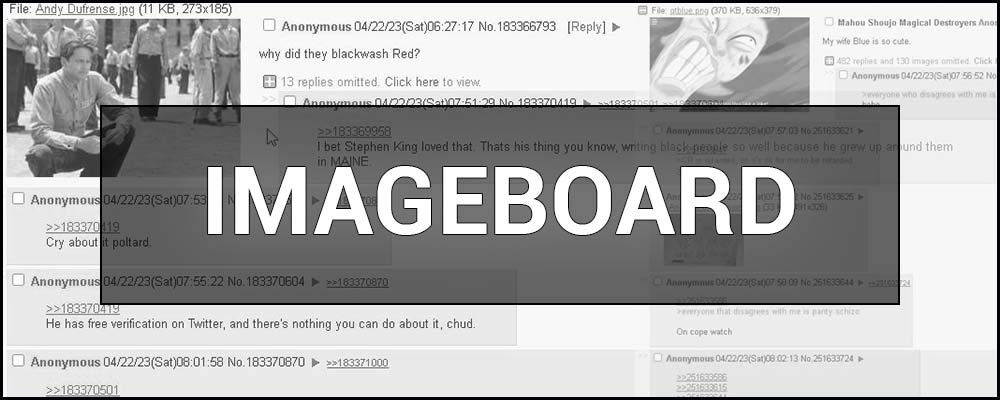An imageboard is a type of web forum where users can share, comment and discuss images in a free and anonymous environment.
What is an IMAGEBOARD – concept and definition in simple words.
In simple terms, an Imageboard is an online site where people can share and discuss images.
Imagine a forum, but with more emphasis on images than text. The main difference from conventional forums is that on imageboards, users tend to remain anonymous, and their posts may disappear after a certain time. This structure allows you to freely express your opinion and communicate with other users on various topics, but at the same time, you need to be careful because sometimes you can find unpleasant or illegal content here.
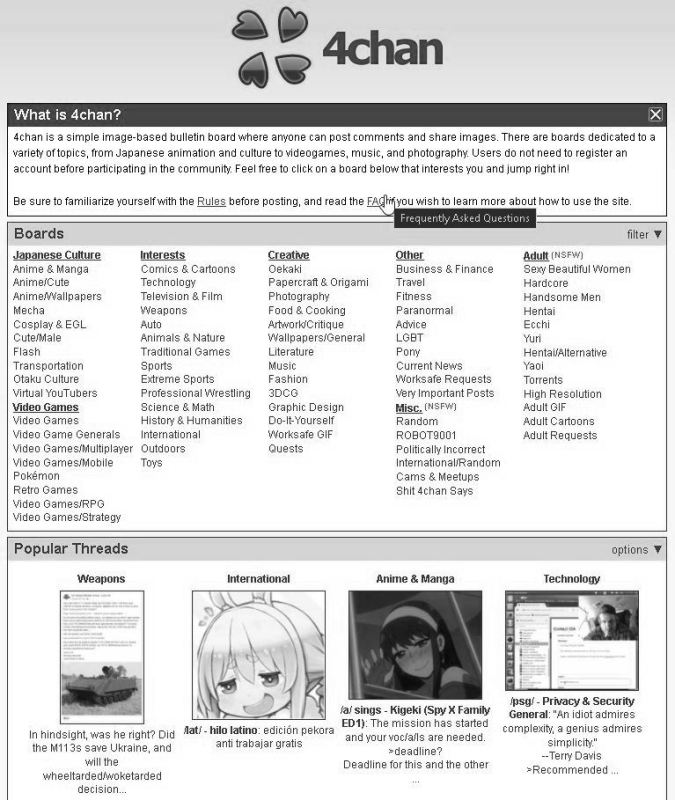
The beginnings of Imageboards: Recalling History.
Image boards appeared at the beginning of the new century, when the Internet was just gaining momentum. The first imageboards were created in Japan. In particular, one of the most popular among them was 2chan (Futaba Channel), launched in 2001. 2chan became a place where people could freely share their ideas, memes, and images on various topics.
Influence of Japanese Imageboards.
2chan and other Japanese image boards have played an important role in shaping internet culture and spreading this format of communication. They inspired the creation of many other image boards, including the famous 4chan, which was founded in 2003 by the American Christopher Poole (“moot”). It was thanks to 4chan that imageboards became widely known and popular on the English-speaking Internet, which led to the creation of new platforms and the development of this phenomenon in the world.

Anatomy of Imageboards: Let’s understand the basics of how they work.
Imageboards have a fairly simple structure, which consists of the following elements:
Threads and posts.
On imageboards, there are threads, which are a sequence of posts on a specific topic. The first post in a thread usually contains an image and a short text that summarizes the discussion. Other users can leave their comments and add new images in response to the initial post. This creates a chain of responses and discussions.
Anonymity and user interaction.
One of the key features of imageboards is the anonymity of users. Instead of registering accounts and using permanent pseudonyms, participants can leave messages without any identification. This creates an atmosphere of free exchange of thoughts and ideas, but can also lead to less responsible behavior and toxicity.
Temporality of content on imageboards.
Another important feature of imageboards is the ephemeral nature of the content. Messages and topics can be automatically deleted after a certain time or when they become less active. This helps to keep the content up-to-date and ensures that discussions are fresh. However, it should also be borne in mind that this can lead to the loss of valuable information and make it difficult to find old discussions.
Overview of Imageboards: Tips for users.
The variety of image boards can seem overwhelming, but with the right guidance, you can navigate and find the platforms that match your interests.
Top 10 popular imageboards:
- 4chan is the most famous English-language imageboard known for its content and anonymity.
- 8chan (8kun) is an alternative to 4chan that contains more diverse topics.
- Reddit – has some common features with imageboards, allowing you to discuss topics in different “subreddits”.
- Krautchan is a German imageboard that focuses on a variety of topics, including politics and sports.
- Dvach (2ch.hk) is the most popular Russian imageboard dedicated to a wide range of topics such as politics, memes, science, etc.
- Lainchan is an imageboard focused on technical topics, computers, and cyberspace.
- Operatorchan is an imageboard related to weapons, tactics and military topics.
- Uboachan is an imageboard dedicated to Japanese video games and subculture.
- 7chan is an alternative English-language imageboard with various sections.
- 2channel is a Japanese imageboard known for its anonymity and a large number of sections.
Various topics: from innocent hobbies to scandalous discussions.
Imageboards differ in topics and audience. You can find sections dedicated to art, science, sports, video games, and many other topics. However, some sections may contain content that is inappropriate or controversial, so it is important to know which imageboards you are accessing.
Caution. Potential dangers on imageboards.
When you are on imageboards, you should be aware of possible risks, such as adult content (NSFW), toxic user behavior, or even illegal material. You should not trust anonymous users, and you should always maintain a critical attitude towards the information you find here. Use common sense and caution while on imageboards, and you will be able to enjoy the benefits of these platforms while maintaining your safety and well-being.
Getting to know the Culture of Imageboards.
Before you dive into the world of imageboards, it is recommended that you familiarize yourself with the local culture and communication patterns. Understanding the slang, memes, and other phenomena specific to imageboards will help you adapt and communicate with users.
Imageboards are a unique phenomenon of online culture that offers unlimited opportunities for discussing various topics and expressing opinions freely.
However, you should be aware of potential dangers and follow basic safety rules when using such platforms. If you follow these tips, you will be able to enjoy your time on imageboards and explore new horizons of the Internet space.
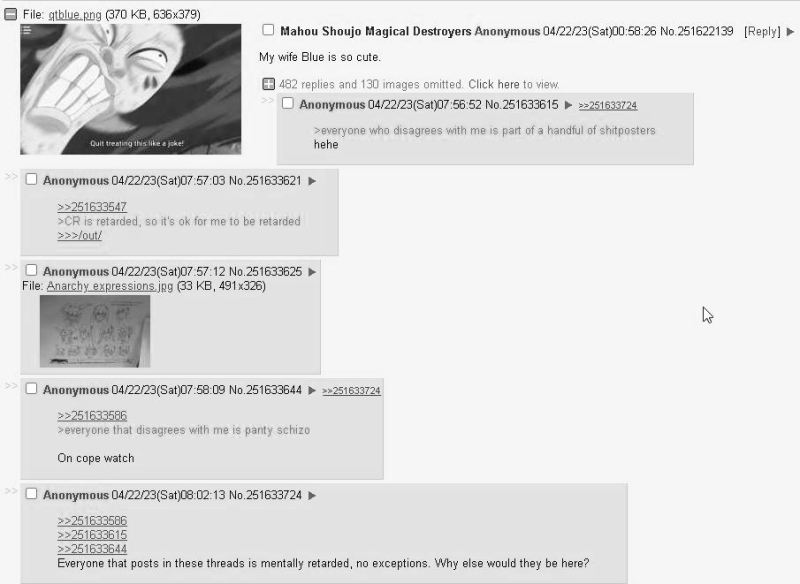
Imageboard vocabulary and slang: deciphering the language of the community.
Apart from their special structure and atmosphere, imageboards are also distinguished by their unique slang and terminology. These words and expressions may seem mysterious to beginners, but eventually become clear to users. Here are some key terms to help you understand the language of image boards:
- OP (Original Poster) – the author of the original message in the thread. This term is used to refer to the person who created the thread or asked something from the community.
- Sage – a response in a thread that does not bring it to the first page. This is used for answers that are not considered important or do not contribute significantly to the discussion.
- Bump is the opposite of a sage, a reply that brings a thread to the front page. Bumps are usually used to support important topics or stimulate discussion.
- Anon – short for “anonymous”, this is a common reference to imageboard users, as they usually remain anonymous.
- Thread – a sequence of messages on a message board that starts with an initial message and contains users’ responses to that message.
- Tripcode – an authentication tool for imageboard users that allows them to show a certain sequence of characters when they post a message to confirm their identity without providing a name or registration.
- Capcha – a verification system used on many imageboards to prevent spam and automatic creation of messages by robots.
- Lurk – to browse imageboards without actively participating in discussions. Lurkers often receive information and observe discussions, but do not respond to messages themselves.
- Meme – an idea, style, or behavior that spreads from person to person on the Internet. Memes can be images, videos, text, or any combination of these elements.
- Sticky – an important or particularly interesting message or thread that the administration or moderators of an imageboard pin to the front page for wide visibility and quick access.
- Roll – a random generation of a number or a sequence of numbers in a message on an imageboard, which is often used to make decisions or determine the winner in online games and contests.
- Spoiler – information that reveals important details of the plot of a movie, book, or other works. On imageboards, spoilers are often hidden behind special tags so as not to spoil the pleasure of watching or reading the work for other users.
- Greentext is a way of formatting text on imageboards when an answer or story is written using the “>” symbol, which changes the color of the text to green. Greentext is used to express opinions or tell stories in a concise manner.
- Dubs – a situation where the last two digits of the message ID on the imageboard are the same. Doubles and other coincidences (triples, quads, etc.) can generate interest or entertainment among users.
- Archive is a saved copy of a thread or message from a message board that has already been deleted or lost due to content storage restrictions. Archives allow users to recall past events and reflect on the history of the community.
- Crossposting is the publication of the same message or material on different boards or threads within one or more imageboards. Crossposting can be used to promote ideas, engage a wider audience, or discuss a single issue in different contexts.
- DMCA is an abbreviation of the Digital Millennium Copyright Act, the American copyright law. On imageboards, DMCA refers to the removal of content that violates copyright.
- Moderator – a user or group of users who are authorized by the imageboard administration to delete, edit or move messages and threads that violate the rules of the resource.
- NSFL (Not Safe For Life) is a label that warns of content that may be shocking or unpleasant to watch, such as graphic violence or outright gruesome scenes. Different from NSFW, the NSFL label warns users of potentially traumatic content.
- Raid – an attempt by an organized group of users to influence an imageboard or other platform through mass posting, spamming, or other actions that violate rules or norms of behavior. Raids can have different motivations, ranging from harmless fun to serious harm.
Although the origin of some terms may be unclear, they have emerged as a result of the collaborative creativity and communication of imageboard users. This unique vocabulary helps to create a sense of community and belonging, and contributes to a deeper understanding of imageboard culture. Knowing these terms and expressions will facilitate your communication and help you become a true member of this unique online community.
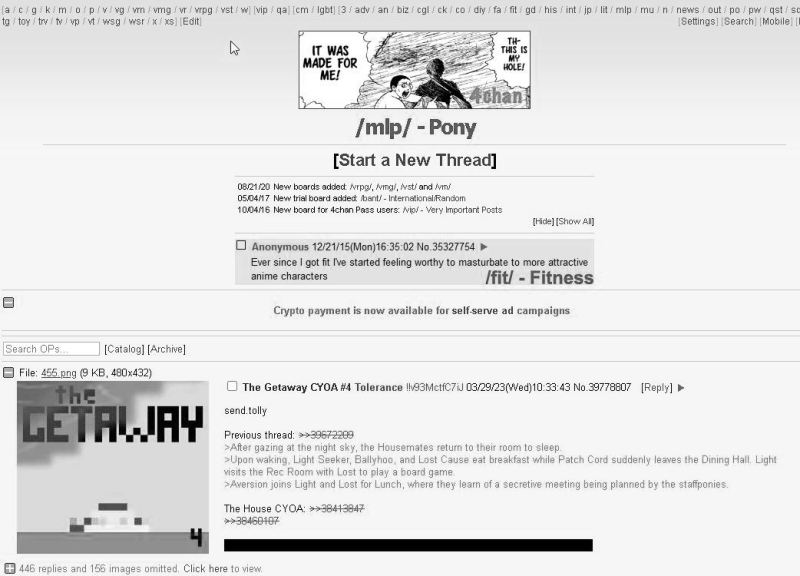
Imageboards and the cybercultural zeitgeist: the butterfly effect.
Imageboards have had a significant impact on the formation of Internet culture, spreading new memes, ideas, and phenomena. They have become a special platform for creativity and communication, with their own unique rules and traditions.
Inventions that spread from imageboards.
In particular, many memes that have become known around the world originate from imageboards. For example, the famous Pepe the Frog meme was launched on 4chan and later spread to other platforms, where it acquired new shades of meaning.

Important events from imageboards.
Imageboards have also become the place of origin for a number of famous online events. For example, the well-known operation “Project Chanology” was organized on 4chan against the Church of Scientology. This protest united anonymous users of imageboards and became the first large-scale manifestation of the Anonymous group’s activism.
Phenomena born on imageboards.
Imageboards are also a testing ground for inventing new forms of communication and interaction. For example, “greentexts,” a way of formatting text using the “>” symbol to highlight quotes or convey an ironic attitude to a situation, appeared on imageboards and later became widespread in other parts of the Internet.
Thus, imageboards have played an important role in shaping the cybercultural zeitgeist, influencing memes, ideas, and trends on the Internet. They have become an integral part of modern cyber culture, inspiring new generations of users to create and communicate.
Not only memes and new forms of communication originate on imageboards. They have become the starting point for various social movements that have subsequently become global initiatives. For example, the #MeToo movement was developed on imageboards, where women began to share their stories of sexual harassment and abuse.
Imageboards and their impact on art and creativity.
Imageboards also serve as a platform for the exchange of creative ideas and art. Many young artists, musicians, and writers find inspiration in the works of other image board users. For example, we can mention the game “Undertale” created by Toby Fox, who took inspiration from posts on imageboards.
Imageboards have made a great contribution to the formation of modern cyber culture, influencing memes, ideas, and trends on the Internet. They have helped to create new forms of communication, creativity, and social movements. And while some aspects of imageboards may be controversial, their role in the modern online space cannot be overestimated.
Advantages and disadvantages: The dichotomy of participating in imageboards.
Interacting with image boards has its advantages and disadvantages. On the one hand, imageboards foster creativity, community building, and the exchange of ideas. On the other hand, anonymity can lead to negative phenomena and dangerous content. Given these factors, users should choose image boards carefully and be responsible in their online behavior.
Pros: Creativity, community, and learning.
Imageboards have many benefits for their users. They stimulate creativity, provide an opportunity to share thoughts and ideas, and create communities with like-minded people. Participants in imageboards can learn new skills, find support for their hobbies, and connect with other users on a variety of topics.
Cons: Controversy, anonymity, and dangers.
However, along with the advantages, there are also certain disadvantages and controversies surrounding imageboards. Anonymity, which is the main feature of most imageboards, can lead to negative consequences. For example, some users may use anonymity to engage in defamation, discrimination, and other negative actions. In addition, dangerous content, such as NSFW (18+) material, which is not suitable for all age groups, can be found on imageboards.
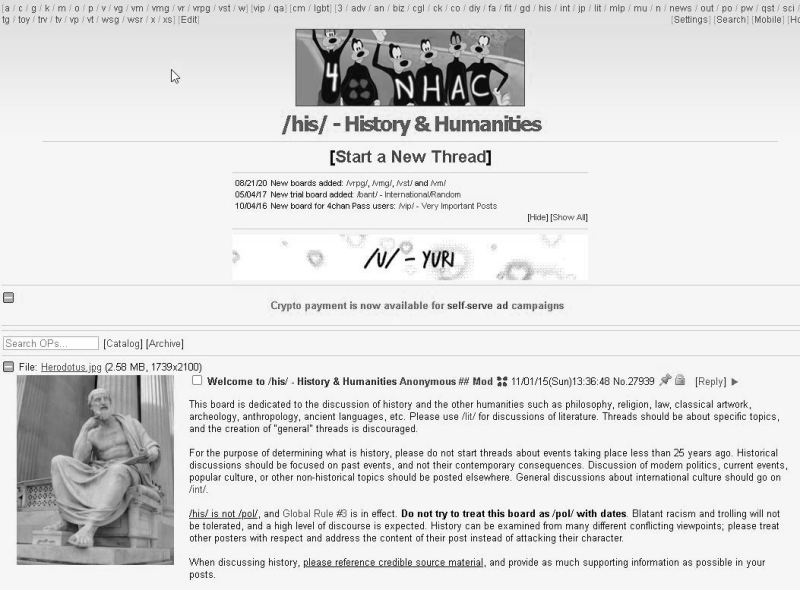
Practical tips for safe use of imageboards.
First of all, when using imageboards, you should follow the following safety and responsibility rules: always check the sources of information, do not disclose personal data, and avoid interacting with suspicious content. Try to use VPNs, secure connections, and anonymous browsers whenever possible.
Critical thinking when working with content.
Always use critical thinking when evaluating content on imageboards. Try to analyze information and sources before accepting them as credible. Ask yourself: who is the author of this information, what is their purpose, and whether it can be verified by other sources.
Conclusion.
To summarize, imageboards are a unique part of the Internet culture that has its own peculiarities and influence on the development of the network. They have become a place to store and disseminate memes, phenomena, and ideas that shape our modern cyberculture. On the other hand, it is important to keep in mind the possible negative aspects and safety when using imageboards.
By exploring the phenomenon of imageboards, we can develop our understanding of Internet culture and actively participate in it, following the best practices of safety and responsibility.

FAQ (Frequently Asked Questions):
An imageboard is a website where users can create topics (threads) and share text messages and images anonymously.
Using imageboards can be safe if you follow a few rules: do not disclose personal information, use a VPN, and be critical of the information on the site.
Anonymity on imageboards means that users can post messages and images without registering or using a personal name.
OP is the author of a topic (thread); sage is a reply that does not move the topic up the list; bump is a reply that moves the topic up the list of active threads.
It is important to approach information on imageboards with a critical eye. Due to the anonymity of users, information may be inaccurate or intentionally false. It is recommended to check the sources of information and use common sense.

